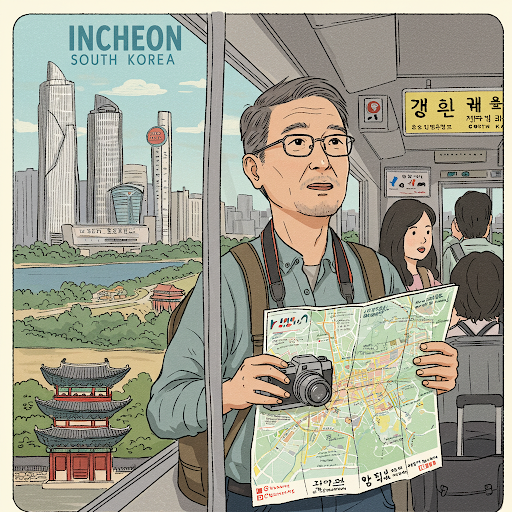Hallasan Travel Guide for Foreigners
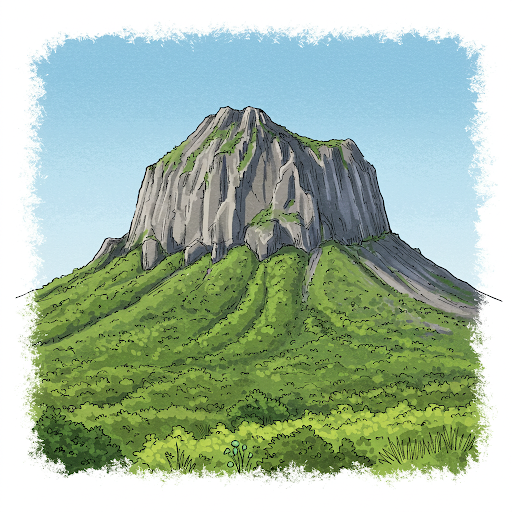
Hallasan, located in the center of Jeju Island, is the highest peak in South Korea and a UNESCO World Natural Heritage site. Climbing to the summit offers not only breathtaking volcanic landscapes and the beauty of seasonal changes but also a chance to experience Korea’s unique alpine ecosystem. To help foreign travelers enjoy a safe and smooth adventure on this sacred mountain, we’ve prepared this comprehensive Hallasan Travel Guide for Foreigners.
Introduction to Hallasan Mountain:
Hallasan, located in the center of Jeju Island, is the highest mountain in South Korea, standing at 1,947 meters. It is a dormant volcano and the centerpiece of Hallasan National Park. The mountain is majestic and ever-changing throughout the year—blooming alpine azaleas in spring, lush greenery in summer, fiery maple leaves in autumn, and a snowy wonderland in winter. These seasonal charms draw countless hiking enthusiasts from both Korea and around the world.
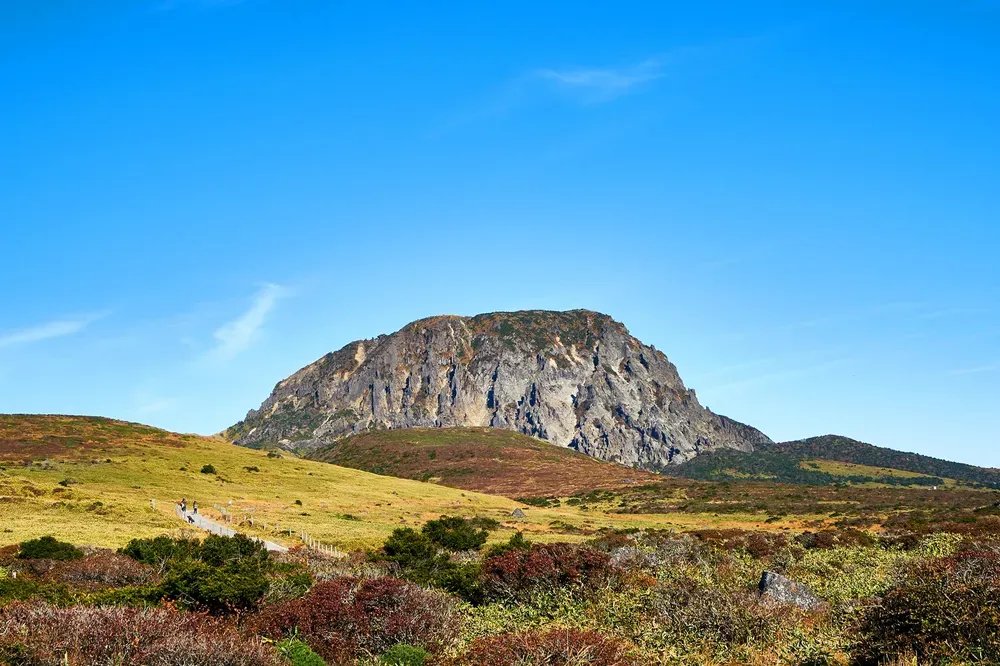
1. Overview of Main Hiking Routes
Hallasan offers several hiking trails, with two main routes leading to the summit. These two are the most popular and require advance reservation:
| Route Name | Distance (One Way) | Estimated Time (One Way) | Difficulty | Features |
|---|---|---|---|---|
| Seongpanak (성판악 Route) | 9.6 km | 4–5 hours | ★★★ | Most popular, relatively gentle slope, suitable for most people |
| Gwaneumsa (관음사 Route) | 8.7 km | 5–6 hours | ★★★★ | Most scenic but steeper, requires good physical condition |
📌 Note: These are one-way trails—you cannot switch routes midway. Please choose one route for both ascent and descent.
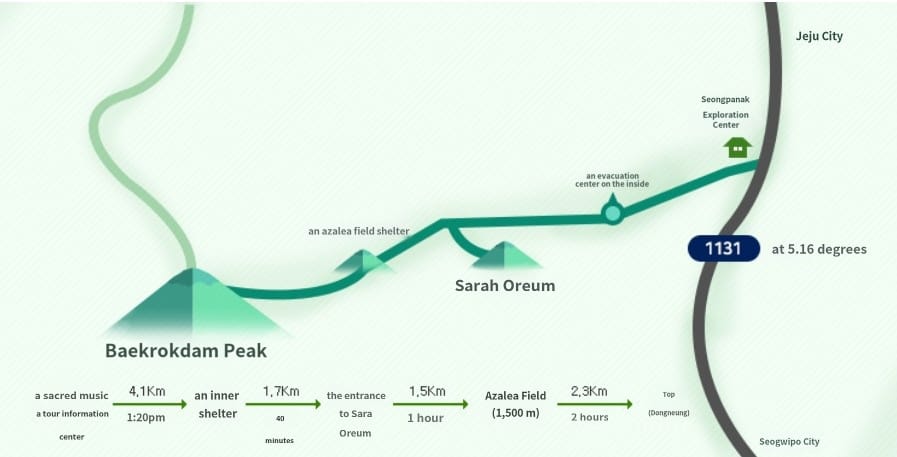

2.Reservation System
To protect the environment and ensure visitor safety, both the Seongpanak and Gwaneumsa trails require online reservations.
⏰ Reservation Opening Time: From 9 AM on the 1st day of each month (non-holiday), bookings open for the following month.
(For example, May reservations open on April 1. If April 1 is a weekend or public holiday, booking starts on April 2.)
🌐 Reservation Website: https://visithalla.jeju.go.kr
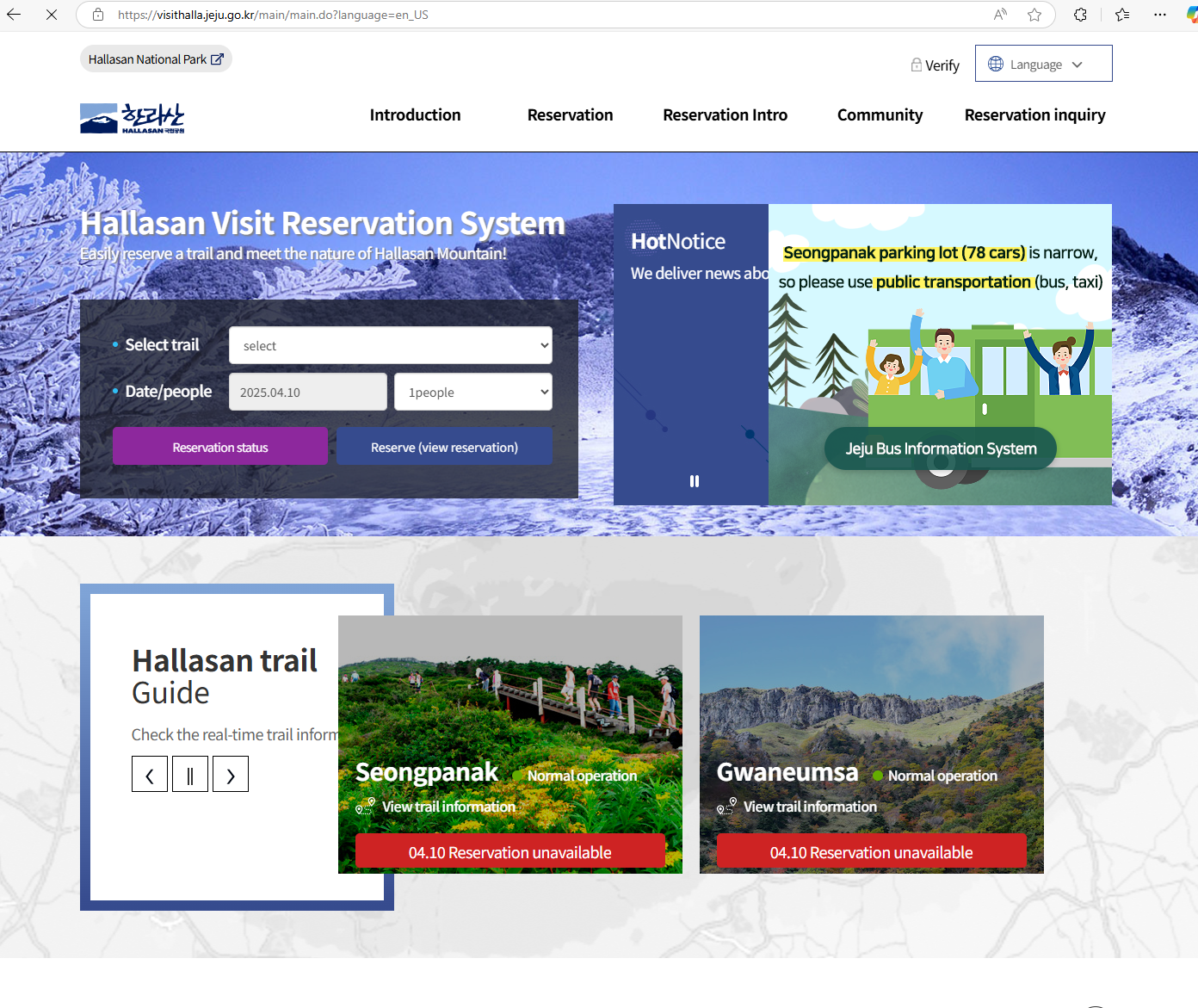
⚠️ Reservation Rules:
- Each person can reserve for up to 4 people
- Only 1 reservation per person per week is allowed
- Cancellation Deadline: Before the end time of entry on the reserved day
Example: In spring and autumn, entry is allowed from 8 AM to 10 AM. If you booked during this period, you must cancel before 10 AM on the day - Failure to enter the trail by your reserved time is considered a No-show, and penalties may apply (e.g., restriction from future reservations)
📱 How to Reserve:
- Visit the official website (available in English, Chinese, Japanese, and Korean)
- Register using your SNS account or email
- On the day of hiking: Present the QR code from your confirmed reservation at both entry and exit
🔍 Important Notes:
- If you do not confirm your reservation within 24 hours, it will be automatically cancelled
- If you fail to enter within your reserved time slot, your reservation will be forfeited, and entry will not be allowed
🔒 Why is a reservation required?
This advance reservation system is implemented to protect the fragile natural ecosystem, which is currently under threat from environmental degradation.
There is a daily limit on the number of hikers:
🏞️ Seongpanak Trail (성판악): Maximum 1,000 people per day
🏯 Gwaneumsa Trail (관음사): Maximum 500 people per day
🕒 How to choose your hiking time?
During the online reservation process, you will need to select your approximate entry time for the trail.
You can choose one of the following three time slots:
- 06:00 ~ 08:00
- 08:01 ~ 10:00
- 10:01 ~ 12:00
If you reserve the first time slot (06:00~08:00), you must enter the trail during that specific period.
⚠️ If you arrive after your reserved time (e.g., after 08:00), you will not be allowed to enter, so be sure to arrive on time!
3. Hiking Gear Recommendations
Proper preparation is essential before hiking Hallasan, especially during fall and winter when temperature differences are large and trails may become icy.
| Essential Items | Reason |
|---|---|
| Hiking shoes / anti-slip footwear | Trails are slippery, especially with snow or ice in winter |
| Windproof and warm jacket | High altitude areas are cold and windy |
| Gloves and hat | Necessary for cold weather, especially in fall and winter |
| Drinking water and snacks | Few or no supply stations along the way |
| Flashlight | Sun sets early in winter — useful if you’re delayed |
| Trekking pole (optional) | Improves stability and reduces strain on your knees |
📌 Layer your clothing to adapt to changing temperatures.
📌 For winter hikes (December to March), consider bringing crampons (아이젠) and heating pads for warmth.
4. Climbing Time Limits & Safety Tips
⏰ Time Restrictions
To ensure hikers' safety, strict time limits are enforced on Hallasan Mountain. Be sure to follow the rules below:
✅ Seongpanak Trail (성판악)
- Checkpoint: Jindallaebat Shelter (진달래밭 대피소)
- You must arrive before 11:30 AM
- It takes about 3–3.5 hours from the trail entrance
- We recommend starting no later than 8:00 AM, or around 7:00 AM to be safe
✅ Gwaneumsa Trail (관음사)
- Checkpoint: Samgakbong Shelter (삼각봉 대피소)
- You must arrive before 10:00 AM
- It takes about 3–3.5 hours from the trail entrance
- We recommend starting before 6:00 AM to avoid missing the time limit
📌 These rules are for your safety!
They ensure you can summit and return before sunset, reducing risks from sudden weather changes or cold temperatures.
⚠️ If you arrive at the checkpoint after the cut-off time, you will be prohibited from continuing to the summit.
⚠️ Other Safety Tips
▪ Do not delay your descent — mobile signal is unstable in the mountains, so please be well-prepared in advance.
▪ It is recommended to stay updated on real-time weather and trail conditions.
▪ After the first snowfall and during winter, trails can become dangerously icy — anti-slip equipment (like crampons) is essential.
▪ In the event of heavy snow or strong winds, the authorities may temporarily close the hiking trails. Please follow all official instructions.
Conclusion
Hallasan is not only the highest peak in South Korea, but also a symbol of Jeju Island's natural beauty. Whether you're a nature lover, seeking a challenge, or just wanting to escape the hustle and bustle and connect with peaceful mountain forests, climbing Hallasan will offer a unique experience. From the forest trails at the foot of the mountain to the breathtaking snowy summit views, each step feels like walking into a constantly changing landscape.
For foreign tourists, as long as you understand the reservation system in advance, choose the appropriate route, prepare the necessary gear, and follow the hiking times and safety rules, you can embark on this meaningful journey with peace of mind. Be sure to monitor the weather, carry sufficient supplies, and avoid rushing, allowing your body to sync with nature as you enjoy the serenity and strength between each step.
When you reach the summit and gaze at the sea of clouds and the volcanic crater lake, that moment of awe and fulfillment will become one of your most cherished memories in Korea. We hope this "Hallasan Travel Guide for Foreign Tourists" serves as your most practical reference before you set off, and wish you a safe, beautiful, and unforgettable journey on Hallasan!

